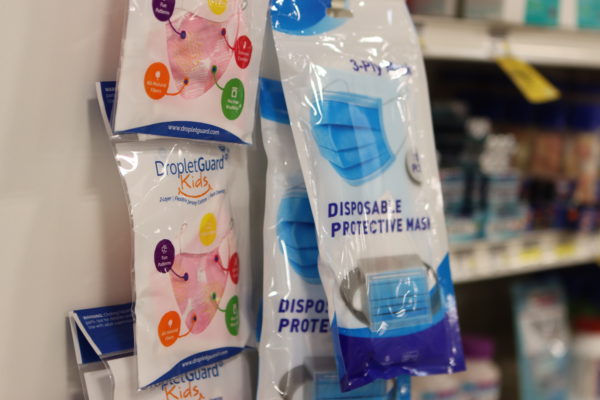
Across the country, health experts are urging people to upgrade their face masks — or put on two — as more contagious variants of the coronavirus spread.
Local health officials say Alaskans should heed the advice.
“A tight weave and multiple layers are what we’re looking for,” said Anchorage Health Department epidemiologist Janet Johnston.
So, if you’re sporting a single-layer cloth face mask right now, Johnston said, it’s time to level up.
“With the more transmissible variants, they don’t cut it anymore,” she said. “It’s just too easy for something to get through.”
LISTEN TO THIS STORY:
Alaska’s state health department has reported just one case of a new variant of COVID-19 so far, called B.1.1.7. Some scientists say the variant could be 50% more contagious. Alaska health officials are bracing for more cases.
“Unfortunately, just as we knew, eventually, the pandemic would make it to Alaska, we also know, eventually, the variants will make it,” Johnston said.
“But what we’re hoping is that people will adopt these more vigilant preventive measures,” she said. “And we’ll be able to keep the spread down.”
When it comes to wearing a face mask, the idea is to create an effective barrier.
Masks make it more difficult for the droplets that spread coronavirus to reach people around you, and for outside particles to make it to your airways, said Dr. David Scordino, medical director of the emergency department at Alaska Regional Hospital.
But not all masks are the same.
For instance, a single-layer cloth mask, Scordino said, is “really just criss-crossing fibers.” It still has areas of open space.
You could think of layering pieces of cloth like stacking slices of swiss cheese, Johnston said. As you add layers, the holes become smaller, or some get covered up completely.
“There’s even more of a maze that the respiratory particles have to get through before they would get out to a place where somebody else could inhale them,” she said.
So wearing a thin, single-layer cloth mask or pulling up a neck gaiter aren’t great options.
Instead, Johnston said, Alaskans could opt to use a single, well-fitting mask that has two or more layers of fabric. (But, she underscored, not so many layers that it becomes hard to breathe.)
Another option is a cloth face mask that has a pocket for a filter, she said.
Double-masking advocates have also recommended people wear a cloth mask over a disposable, surgical mask, saying the combination could provide protection similar to the gold-standard N-95s, which remain in short supply. The idea is that the surgical mask is the main filter, while the cloth mask provides a snugger fit.
Outside of work, Dr. Bob Onders, hospital administrator at the Alaska Native Medical Center, said he normally wears a multi-layer, washable cloth mask with a filter.
“For me, it’s a lot easier to manage just one mask,” he said.
However, if he had to be in a crowded, tight space, like a plane, he would think about wearing two masks and eye protection. It’s all about assessing risk, he said.
“In some scenarios, a cloth mask with at least two to three layers is completely appropriate,” he said. “But as the risk increases, I think you do want to increase your mask safety.”
State Epidemiologist Dr. Joe McLaughlin said while two masks likely will provide more protection, a priority is still getting Alaskans to wear at least one mask — and to wear it correctly.
“Whether you’re wearing one mask or two masks, the mask needs to fit well,” he said.
That means there are no big gaps between the mask and your face, and it must cover your mouth and nose, he said.
Aside from wearing masks, Scordino said, Alaskans should continue to follow other health measures to slow the spread of the virus, such as social distancing, as the vaccination rollout presses on.
“We have light at the end of the tunnel,” he said. “But we’re not there yet.”
Reach reporter Tegan Hanlon at thanlon@alaskapublic.org or 907-550-8447.
Tegan Hanlon is the digital managing editor at Alaska Public Media. Reach her at thanlon@alaskapublic.org or 907-550-8447. Read more about Tegan here.





